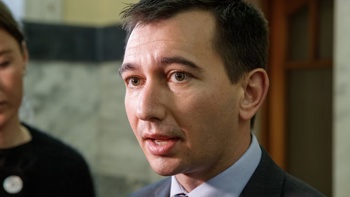
New Zealand's dairy export quota allocation system is to be reviewed for the first time since it was set up 15 years ago, with the aim of maximising value from new FTAs and giving new, innovative players the chance to play in the big league.
Agriculture Minister Damien O'Connor told the Herald the review would get underway with industry consultation late this year.
"It's timely to look at the whole dairy industry. DIRA (Dairy Industry Restructure Act) is being amended to make adjustment for Fonterra (capital restructure), we have negotiated free trade agreements, we have more exporters and independent dairy processors and we probably have reached peak milk.
"So with the volume of raw material we have, we have to be assured we are assisting those who want to maximise the value of it."
Dairy export revenue hit a record $22.1 billion in the year to June 2022.
New dairy quotas would become available under recently negotiated FTAs with the UK and the European Union and would present new opportunities for exporters, he said.
Dairy export quota allocations are set each year by the Ministry for Primary Industries and allocated to eligible processors proportional to the milk they collect from farmers.
To be eligible, processors must collect at least 0.1 per of New Zealand's total milk solids.
New Zealand produced 1.91 billion kilograms of milksolids or 21 billion litres of milk in 2021.
Fonterra, New Zealand's biggest business and the world's largest dairy exporter, could be expected to have the lion's share of quota allocation given the volume it processed.
- Govt and Ngāi Tahu to work together on regenerative farming project
- Fonterra cuts milk price forecast to $9.25/kg
"But for minor players and those who might be looking to grow either the volume of their exports or the value, we've got to create some opportunities," O'Connor said.
MPI can't offer a volume figure for quota allocation because it said there was a diversity of quotas which covered different products and each had different maximum volumes.
New quotas with additional volumes and products would be added as a result of the successful negotiation of FTAs with the UK and EU.
Utilisation of quotas varied considerably by year and by destination, reflecting changing market conditions in both the destination countries and other countries where New Zealand processors export to, the ministry said.
New Zealand and the UK are completing processes for the UK-NZ FTA to be ratified. The dairy quotas under the new FTA would initially be allocated under the current quota allocation mechanism outlined in DIRA.
It's expected New Zealand and the EU could sign that new FTA in 2023, with entry into force possible in 2024.
"We'll be looking at the mechanisms for quota allocation to ensure the settings are right to promote innovation and to provide security as well for those who have invested in the markets and in products for particular markets where there are quotas," O'Connor said.
Any prospective legislation change would be initiated after consultation, which would not be rushed, O'Connor said.
"This is not urgent but it is necessary and so we are not going to be held to clear timelines ... we will make sure we consider it very carefully and objectively.
"It (the consultation) will be open, we are not going to close down opportunities to have input into this.
"These are valuable market opportunities through negotiated quota access and we have to protect the integrity of that access and quality of products that take up those opportunities."
The quota allocation system was established in 2007, initiated by then-agriculture minister Jim Anderton.
Take your Radio, Podcasts and Music with you









